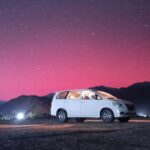Astronomers made a startling discovery: a black hole has torn apart a star and is now using the stellar wreckage to pummel another star or smaller black hole. This unprecedented event, observed using NASA’s Chandra X-ray Observatory and other telescopes, has provided valuable insights into the mysterious workings of black holes.
The event, known as AT2019qiz, was first detected in 2019 by the Zwicky Transient Facility in California. Astronomers observed a burst of light that indicated a star had been torn apart by a black hole’s intense gravitational forces. Over the next few years, the debris from the destroyed star formed a disk around the black hole, creating what scientists call a “stellar graveyard.”
In 2023, astronomers using the Chandra X-ray Observatory noticed something unusual: bursts of X-rays occurring roughly every 48 hours. These bursts were caused by a star or smaller black hole orbiting the supermassive black hole and repeatedly crashing through the debris disk. Each collision created a burst of X-rays, similar to a diver creating splashes in a pool.
The lead author of the study, the phenomena was described by Dr. Matt Nicholl of Queen’s University Belfast as follows: “Consider a diver who dives into a pool on a regular basis and makes a splash each time she goes in. In this analogy, the star is the diver, and the disc is the pool. Whenever the star hits the surface, it releases a massive’splash’ of X-rays and gas.”
This discovery has helped solve a long-standing mystery in astronomy. Scientists had previously observed bright flashes of X-rays from the centers of galaxies, known as quasi-periodic eruptions (QPEs). However, they could not explain what caused these eruptions. The recent observations have provided evidence that QPEs are linked to tidal disruption events (TDEs), where a black hole tears apart a star.
Co-author Dr. Dheeraj Pasham from the Massachusetts Institute of Technology said, “There had been feverish speculation that these phenomena were connected, and now we’ve discovered the proof that they are. In terms of answering puzzles, it’s comparable to receiving a cosmic two-for-one.”
The study, published in the journal Nature, has been hailed as a significant breakthrough in our understanding of black holes and their interactions with surrounding stars. The observations were made using a combination of telescopes, including NASA’s Chandra X-ray Observatory, Hubble Space Telescope, NICER, Swift Observatory, and India’s AstroSat.
The discovery of AT2019qiz has provided valuable data for astronomers studying the environment around supermassive black holes. By observing the debris disk and the repeated collisions, scientists can gain insights into the dynamics of black holes and their impact on nearby objects.





